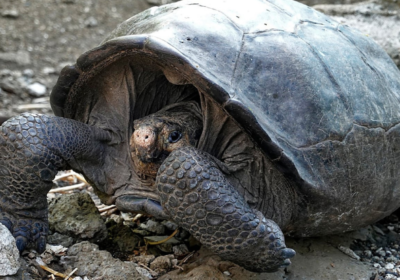What is the first thing that comes to your mind when you think about the Giant Panda? Well, it’s cute, cuddly, and has an adorable face. But the next thing you would imagine is the bamboo shoot that this gentle giant relishes. So, do pandas really love bamboo? Or, why do they eat so much bamboo? Let’s check some interesting panda facts for kids.
Interesting Panda Facts for Kids
Pandas are the gentle giants of the forest. They live mainly in the temperate forests in the mountains of southwest China. You can easily recognize them by the large, black patches around their eyes, ears, and across their round body.
Panda belongs to the bear family and in that sense is a carnivore, or rather an omnivore! And it does have the digestive system of a carnivore. It is generally solitary in nature, and does not establish any permanent dens.

The Diet Shift
Researches show that about 2 million years ago, pandas used to eat meat. But then they started feeding on a variety of vegetation, and slowly switched to a diet comprising mostly of bamboo.
The genome analysis of pandas suggests that the dietary switch could have been triggered by some genetic mutation where they lost the umami meat protein taste receptor. As a result, they were unable to taste meat very well. They gradually lost interest in meat and were forced to switch to a vegetarian diet. Bamboo was probably the most abundant vegetation available in its natural habitat. So, things just fell into place!
Digestive Adaptations
Though pandas turned vegetarian, their digestive tract was still not adapted for a vegetarian diet. So, how did the pandas manage their plant diet? Researches show that the gut of the panda contains certain microbes that help in breaking down the cellulose. And surprisingly, the new born panda cubs with their sterile guts acquire these bacteria by ingesting their mother’s feces!
Diet Volume
How much bamboo does a panda consume? About 99 percent of panda diet consists of leaves, shoots, and stems of bamboo. An average adult panda needs about 10-18 kilograms of bamboo to satisfy its protein needs, bamboo being very low on nutrition. So, more than half of their day is spent eating (and pushing out the undigested plant matter)! The rest of their time is spent sleeping, to regain energy for next day’s marathon diet!
Hibernation
Though most members of the bear species go though a period of hibernation, the giant pandas cannot afford to do so! They are unable to store enough body fat for the foodless hibernating months. The bamboo, unfortunately, does not provide enough energy to allow the panda to sustain a long period without eating.

Diet Composition
Panda diet consists of almost 20 species of bamboo, including arrow bamboo and black bamboo. They prefer different parts of the bamboo during different seasons. During spring and summer they prefer the shoots; in autumn they feed on the leaves more than the shoots, and in winter it is usually the roots!
Physical Adaptations
The panda usually eats sitting in an upright position, which helps it to hold the bamboo shoots with its front paws. The panda also has a pseudo thumb that helps to provide a better grip on the bamboo stems. They use their strong teeth to remove the tough outer parts of the bamboo stem and then munch on the soft inner parts.

Threats and Survival
Bamboo is a special plant category where all the plants of one species growing in an area bloom and die together. Due to this reason, a good panda habitat should have several species of bamboo. The shortage of such bamboo groves poses a grave threat to panda population. The latest census held in 2014 estimated that there were about 1800 pandas living in the wild!
Poaching used to impact the panda population in the past, but the impact has declined due to the enactment of the Wildlife Protection Act (1988) that bans poaching and imposes severe punishment if caught in the act.
Quick Fact: The WWF (Word Wide Fund for Nature) logo was inspired by Chi-Chi, a giant panda that lived at the London Zoo in 1961, the same year WWF was created!
So, did you enjoy reading Panda facts for kids to learn about their amazing diet habits? Check our Fascinating Facts section to read further and enrich your knowledge.
Here’s Something You Might Like
As a participant in the Amazon Associates Program, Science4Kids may earn from qualifying purchases.




